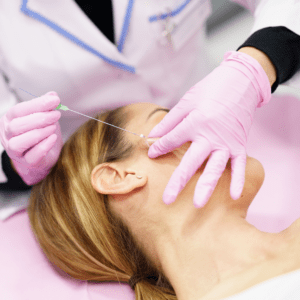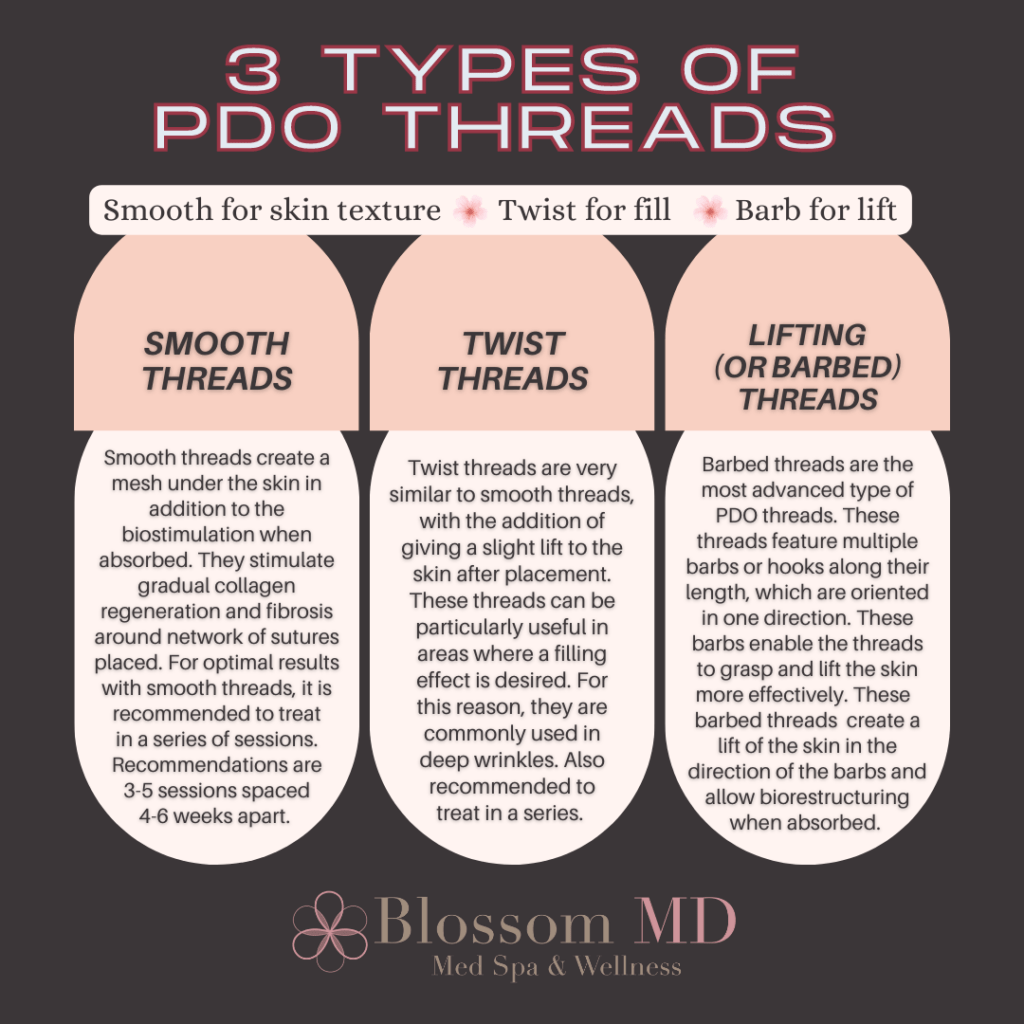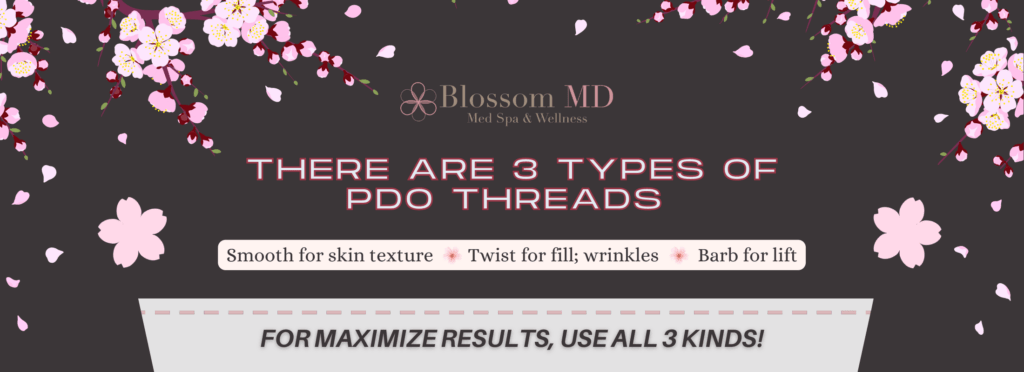Unveiling the Threads: A Guide to the Three Types of Threads Used in the PDO Thread Lift Procedure

In the ever-evolving world of beauty, wellness, and aesthetic medicine, the PDO thread lift procedure has emerged as a popular and minimally invasive alternative to surgical facelifts.
What is a PDO Thread Lift?
This innovative treatment utilizes polydioxanone (PDO) threads, which are inserted into the skin to stimulate collagen production, promote skin tightening, and restore a youthful appearance.
These are the same kind of threads that have been used for many years, within the medical industry, in circumstances such as stitching for injuries and surgeries.
In this blog post, we’ll explain the three different types of PDO threads used in the lift procedure, and detail their unique characteristics, benefits, and applications.
So, if you’re considering a youthful tweak to your look, this will help you to make informed decisions about your journey towards a rejuvenated look.
PDO threads are the threads used in a type of cosmetic treatment used for non-surgical facial rejuvenation. The treatment involves the insertion of surgical threads into the skin to lift and tighten sagging areas, stimulate collagen production, and improve the overall texture and appearance of the skin.

3 Types of Threads
PDO threads come in various types, each with its own ideal application and use. The three main categories are:
Smooth Threads: Smooth threads are the most basic type of PDO threads. They consist of single, smooth threads without any barbs or hooks. These threads are primarily used for stimulating collagen production and improving skin texture. When inserted into the skin, they create a supportive mesh that lifts and tightens the targeted areas. This type of PDO threads are often used for treating fine lines, wrinkles, and mild sagging.
Smooth PDO threads are commonly used to address areas with mild to moderate sagging and signs of aging, such as fine lines, wrinkles, and loose skin. They can be applied to various facial areas, including the cheeks, forehead, jawline, and neck to improve skin laxity and firmness.
The treatment is typically performed using local anesthesia, and the threads are inserted into the skin through small incisions or needle punctures. The procedure is relatively quick, and patients can resume their normal activities shortly after the treatment.
Twist Threads: During a typical PDO thread treatment, these threads are inserted into the skin through a small needle or cannula. Once inserted, they provide a supportive framework or “scaffold” that lifts and supports the tissue. The threads also stimulate the production of collagen, which helps to improve skin texture and firmness over time.
Then the twisting technique, often used in conjunction with PDO threads, is applied, rotating or twisting the threads after they have been inserted into the skin. This twisting action helps to enhance the anchoring of the threads, providing a stronger lift and a more secure hold. The twisting technique can be particularly useful in areas where a greater degree of lifting or tightening is desired, such as the jawline or neck. Also for deeper wrinkles or lines such as 11 lines.
Barbed Threads: Barbed threads are the most advanced type of PDO threads. These threads feature multiple barbs or hooks along their length, which are oriented in one direction. These barbs enable the threads to grasp and lift the skin more effectively.
Barbed threads are commonly used for significant facial lifting, particularly in areas with pronounced sagging, such as the brows, nasolabial folds, and neck, because the tiny barbs along their length, allow for a stronger grip and anchoring within the skin.
One of the advantages of PDO barbed threads is that they offer both immediate and long-term results. The lifting effect can be seen immediately after the procedure, while the production of new collagen fibers continues over weeks and months, contributing to ongoing improvements in skin quality.
Which PDO Thread is Best for My Desired Outcome?
It’s important to note that the specific application and technique of PDO threads may vary among practitioners. The selection of thread type depends on the individual’s goals, skin condition, and the areas to be treated. PDO thread treatments should be performed by trained and experienced professionals to ensure safety and optimal results.

PDO Thread Lift Experts
When it comes to PDO thread lift procedures, choosing the right provider is paramount to achieving the best possible results and ensuring a safe and satisfactory experience.
At BlossomMD, we pride ourselves on being highly trained and skilled in performing this innovative treatment. Our team of experienced medical professionals understand the intricacies of PDO threads and the artistry involved in achieving natural-looking results.
With BlossomMD, you’ll benefit from the expertise of providers who stay at the forefront of the industry, continuously updating their knowledge and techniques to deliver the highest standard of care.
Begin our journey to a more youthful and refreshed appearance with a consultation at BlossomMD, where your goals and concerns will be listened to and addressed with utmost professionalism and compassion.
Choose BlossomMD for your PDO thread lift, and let us help you blossom into your most confident and radiant self.

